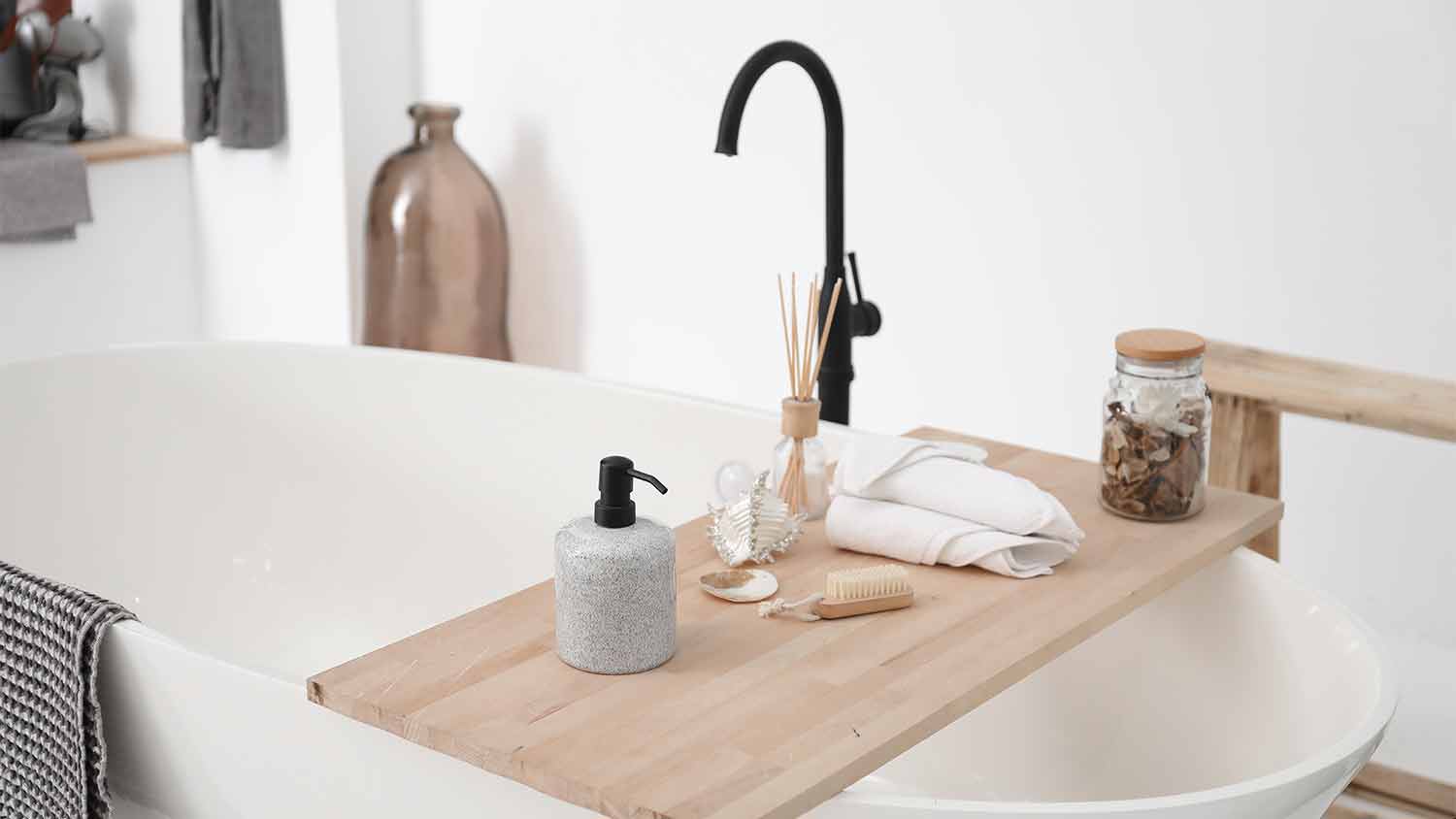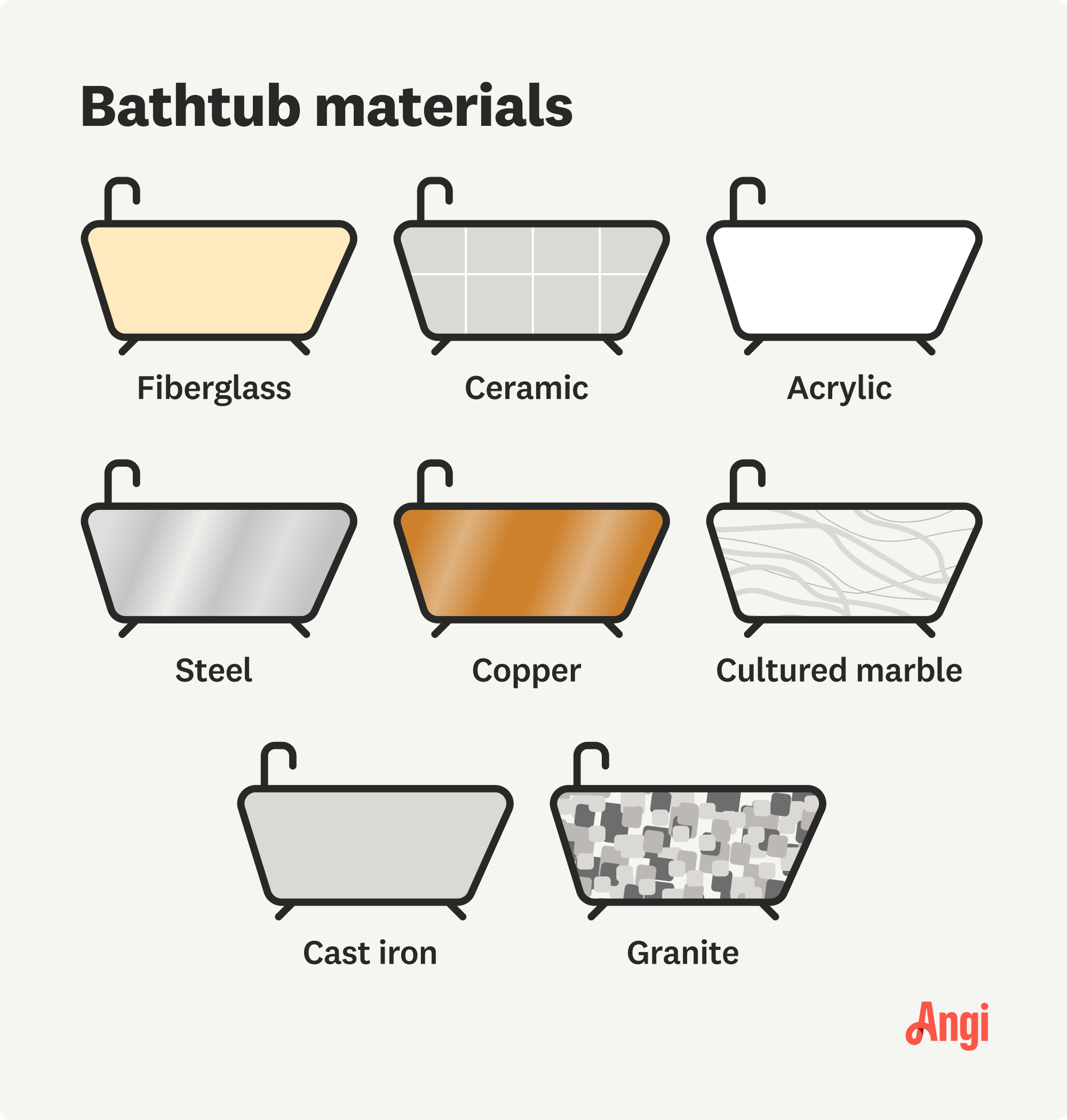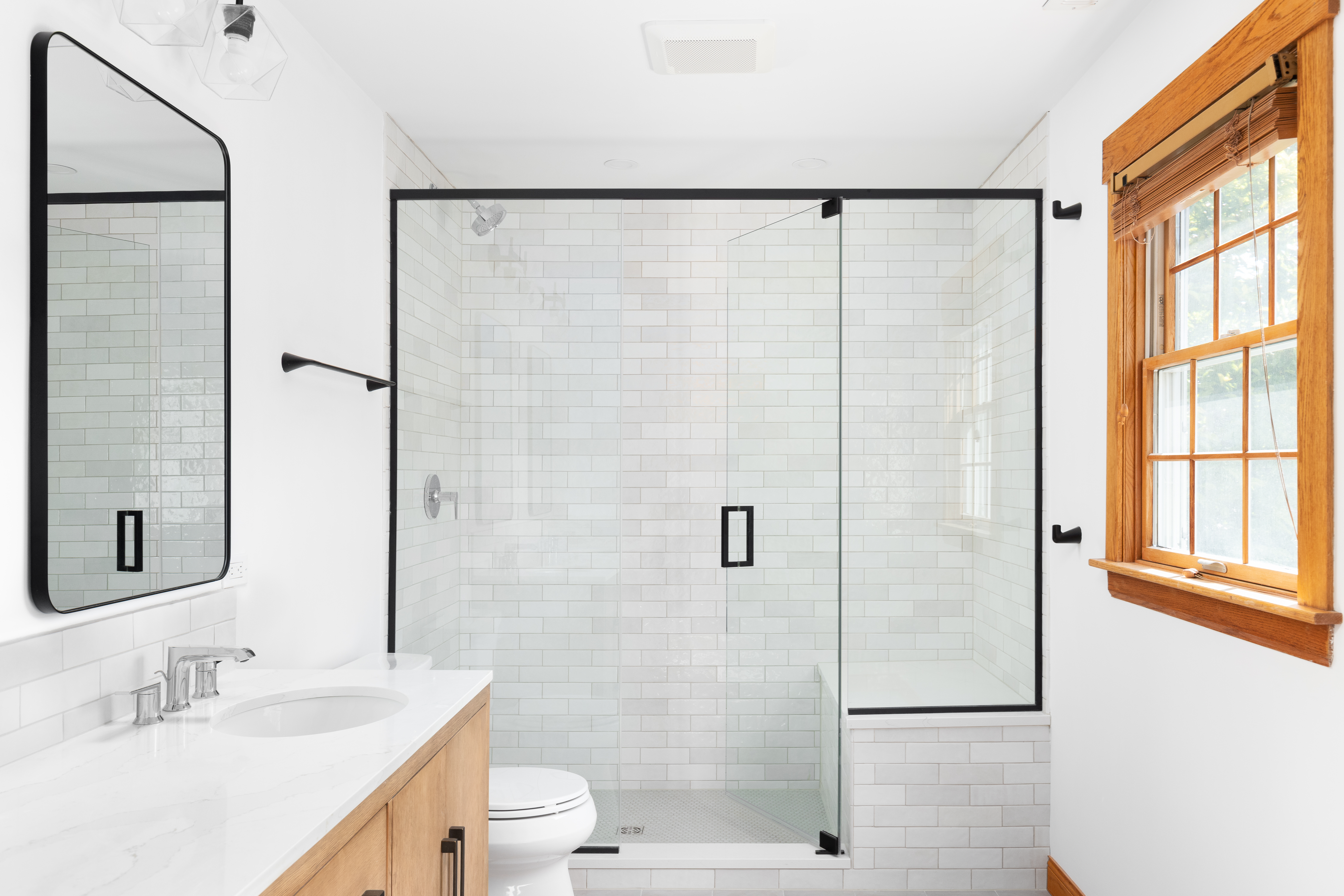
Knowing how much it costs to renovate a house will help you plan and budget appropriately. Use this guide to get a rough estimate for your project.
Replacing a bathtub in St. Louis, MO, costs between $637 and $1,307 on average, depending on the materials you choose. A bathtub installation pro can provide a quote for your specific project.


Missouri’s lower cost of living compared to coastal markets translates to more affordable bathtub replacement costs in St. Louis, as much as 35% less on average than higher-cost cities.
Victorian-era homes and brick bungalows often require plumbing upgrades, ranging from $400 to $1,900, to meet current building code requirements.
St. Louis requires plumbing permits, costing $50 to $300 on average, issued to certified Master Plumbers and Drainlayers for bathroom updates like new tubs.
With an affordable housing market and a mix of historic neighborhoods, many St. Louis residents consider a bathtub replacement a practical renovation with a good return on investment. A bathtub replacement costs $971, on average, with homeowners paying anywhere from $325 to $1,900 all-in. A lower cost of living in St. Louis, Missouri means more competitive pricing for skilled plumbers, whether you’re restoring a clawfoot in the Central West End or installing an accessible tub in South County.
In estimating the cost of a new bathroom replacement in St. Louis, Missouri, homeowners should consider moisture resistance and proper ventilation in light of the region’s humid continental climate. St. Louis's housing stock includes everything from pre-1900 homes to post-war ranches, which means plumbing accessibility and subfloor conditions can greatly impact final cost.
Many tub styles balance aesthetics and utility to bring comfort and relaxation. Here’s a look at the average costs associated with different tub styles.
| Tub Style | Average Cost |
|---|---|
| Standard | $200–$800 |
| Soaking tub | $600–$13,000 |
| Jet and Whirlpool | $1,000–$4,000 |
| Freestanding | $600–$3,000 |
| Walk-in | $4,000–$22,100 |
| Accessible | $4,000–$12,000 |
| Clawfoot | $10,000+ |
A standard bathtub is one of the least expensive options, with costs ranging from $200 to $800, depending on the tub material. General-purpose tubs are rectangular or oval-shaped and have a showerhead above. You may also need to install a surround for an additional $500 to $2,000.
Deep-basin soaking tub costs range from $600 to $13,000. Like other styles, the price of soaking tubs is mainly determined by material and size. Because these are deeper than standard tubs, confirm that the tub will fit your space before purchasing.
Bathtubs with jets help soothe stiff muscles and sore joints. The average whirlpool-style tub costs $1,000 to $4,000, and these come in a variety of shapes and sizes to fit your needs. Jets require electricity, so additional work is required to install these tubs, which means higher labor costs and possibly a more substantial remodel.
Freestanding bathtubs have space to move around on all sides. They make for a distinctive element to your bathroom, especially if you’re accustomed to traditional built-in tubs. Freestanding tubs average $2,500, but ensure you have enough space before committing.
Walk-in tubs offer safety and comfort features, including a door, and allow for easier access for older adults and people with disabilities. They cost between $4,000 and $22,100 and can increase your home’s value.
While walk-in tubs offer one form of accessibility, accessible bathtubs can offer more features (including walk or slide-in functions). Most accessible bathtubs are larger and may include a wider, sometimes motorized, entryway. The cost of accessible bathtubs ranges from $4,000 to $12,000.
Distinctive clawfoot tubs can cost $10,000 or more, but you can find options that fit just about any price range. Depending on the material used, the job may require flooring reinforcement.

The bathtub material you choose is a major factor in how much it costs to replace a bathtub.
| Material | Average Cost | Pros | Cons |
|---|---|---|---|
| Fiberglass | $200–$800 | Lightweight; affordable | Doesn’t retain heat |
| Ceramic | $5,000–$10,000 | Unique design | Can chip |
| Acrylic | $300–$1,500 | Lightweight; durable | Discoloration |
| Steel | $200–$1,000 | Lighter than cast iron | Loud; can chip |
| Copper | $2,000–$5,000 | Durable; mold-resistant | More costly |
| Cultured marble | $2,000–$5,000 | Stylish | Heavy; can crack |
| Cast iron | $400–$2,000 | Durable | Heavy |
| Granite | $10,000–$20,000 | Aesthetic | Heavy; difficult to install |
Fiberglass tubs are an affordable option. They’re lightweight and come in a variety of colors. You'll pay between $200 and $800 to install a new fiberglass bathtub. Unlike some other materials, fiberglass is not great at retaining heat.
Adding a ceramic tub to your bathroom costs anywhere from $5,000 to $10,000, with prices varying based on the colors and styles of ceramic tile you choose. Ceramic tubs offer unique bathtub design choices, but you will have to clean the grout and repair chips.
Acrylic is a popular material for families due to its resistance to bath toys and dog paws. Standard acrylic tubs cost $300 to $1,500, with high-end models approaching $14,000. Opt for acrylic for a lightweight, durable bathtub option.
Enameled steel is a lighter and more cost-efficient alternative to cast iron, with a price range of $200 to $1,000. However, steel drawbacks include the risk of chipping, and they can make a cacophony of sounds while filling.
Copper bathtubs cost $2,000 to $5,000. In addition to its chic appearance, copper is a durable, long-lasting material that’s resistant to mold and bacteria. This material also holds heat well, making it ideal for long, hot baths.
Stylish marble makes for a show-stopping bathroom. Installing a marble tub will run between $2,000 and $5,000. Unlike acrylic, marble is heavy and susceptible to cracks. Ask your pro about extra care and reinforced flooring when you opt for marble.
Porcelain enamel-coated cast-iron tubs come in a range of styles to fit your dream bathroom. They retain heat well, but cast iron is heavy and may require extra reinforcements. Most cast-iron bathtubs cost between $400 and $2,000.
The best part of a cast iron tub is the lack of noise and high rigidity. There’s no flex or anything like that.
If you want a bathtub that doubles as modern decor, you can install a granite tub for $10,000 to $20,000. This material is incredibly durable and long-lasting, but can be heavy and difficult to install.
Removing the old tub and inserting the new one isn’t always as easy as it sounds, and there are plenty of additional costs.
| Additional Projects | Average Cost |
|---|---|
| Tub removal and disposal | $50–$300+ |
| Shower-to-tub conversion | $2,000–$10,500 |
| Subfloor prep and reinforcement | $300–$3,000 |
| Surround | $500–$2,500 |
| Bath liner | $2,700–$10,000 |
| Faucets | $50–$900 |
| Electrical upgrades | $200–$2,000 |
| Water damage repairs | $450–$14,000 |
The cost to remove and dispose of an old bathtub depends on its type. Fiberglass tubs, which are lighter in weight, cost $50 to $100 to remove. Hauling away a heavy cast-iron bathtub could cost $300 or more.
Converting a shower into a bathtub costs $2,000 to $10,500. You’ll need to remove the shower—and since tubs are larger than showers—you might have to remove walls, relocate plumbing, or move electrical wiring to make room for a tub. Tub-to-shower conversion costs are similar.
Heavy tubs need structural support underneath, which can cost $300 to $800. Repairing floor joists costs $4,000 to over $12,000, depending on the condition of the existing floor joists. The cost of subfloor replacement due to damage under your old tub is $3 to $10 per square foot, but your bathroom remodeling project may not require it.
Installing a bathtub surround costs about $500 to $2,500. For bathtub-shower combos, you’ll want to install a surround consisting of waterproof panels to protect the drywall from shower water.
Bath liners cost about $6,400 on average, but they range from around $2,700 to over $10,000, depending on the size of your existing tub. A bath liner is a customized acrylic layer that fits over an existing tub to give it a new look and feel.
Adding a new faucet or other bathtub hardware costs about $50 for basic options to over $900 for hardware made from copper or porcelain. You can spend over $700 for high-end faucets, like waterfall or spa-style faucets.
Upgrades to an electrical panel cost $1,600 on average, ranging from $200 to $2,000. You may also need to upgrade or add electrical wiring to your bathroom. This may be necessary if you install a jetted or Whirlpool-style bathtub or a tub with high-tech features, like lighting or speakers. If you’re adding a jetted tub, you’ll need a ground fault circuit interrupter (GFCI).
When you take out the old tub or shower, you may encounter water damage in the floors or walls. The cost to demo a bathroom to uncover the extent of the damage can add substantially to your final invoice amount. Water damage restoration costs about $3,850. Smaller cases cost $450, while extensive damage and repairs can cost over $14,000.
Depending on your situation, you can refinish or replace your bathtub. Refinishing involves sanding the tub and coating it with primer and paint to remove any small dents or scratches and give it a clean and fresh appearance. Bathroom contractors can complete the refinishing process in a day, and it costs an average of $480.
If your bathtub is severely damaged or has major leak issues, it might not be in good enough shape to refinish, making bathtub replacement a better option. If leaks have damaged the flooring or surrounding wall, you’ll need to make repairs and remove mold. Depending on the new tub, you might need to reroute plumbing to make the bathtub replacement work. Bathtub replacement is another job for a qualified bathroom contractor and possibly an electrician or plumber.
St. Louis is home to an established network of skilled transpeople with a competitive pricing structure. Labor costs are generally affordable, with good availability from certified plumbers for a variety of bathtub replacement projects.
The labor cost to replace a bathtub averages $800 to $2,500, based on fair market rates for quality work in Missouri’s moderate cost-of-living environment.
Costs can go higher if you relocate plumbing lines, remove or install a heavy bathtub, or make repairs to subflooring, which may be the case with century-old plumbing systems in historic neighborhoods like Compton Heights. Newer homes typically feature more straightforward modern plumbing configurations.
If you’re installing a different type of tub than the existing one or placing the new one in a different spot, you might need some plumbing work. Budget $400 to $1,900 to move plumbing lines and pipes.
The City of St. Louis only issues plumbing permits to Master Plumbers and Drainlayers. When speaking with your St. Louis bathtub installer, recognize that both the city and county use value-based fee schedules, meaning your permit cost depends on the declared project value rather than a flat rate.
Building permits cost about $50 to $300 for plumbing work and $50 to $300 for electrical work, like adding circuits for jetted tubs. Ask your contractors about the necessary permits, and don’t start work until you secure them, even if you’re DIYing. St. Louis County has its own permitting requirements if you live outside the city limits, so confirm which jurisdiction governs your property.
St. Louis's many historic districts and homeowners' associations (HOAs) can add another layer of requirements to your bathtub replacement project.
If you live in a designated historic area like Lafayette Square, you may need approval from the Cultural Resources Office before starting work that affects your home's character. When deciding who to hire for a bathroom remodel, look for experience working on older buildings.
Homes under HOA governance may face design restrictions that limit material choices, fixture styles, or installation timing. Some HOAs require architectural review committee approval, particularly in attached housing where plumbing work could affect neighboring units.
These additional review processes don't typically add direct costs beyond possible application fees, but they can extend your project timeline by two to six weeks, depending on meeting schedules and review procedures.
A bathroom remodel in St. Louis provides an average return on investment of 60% to 70%. A full bathroom remodel costs more, but even just updating your bathtub contributes meaningfully to the overall value of your home. In desirable St. Louis neighborhoods like Webster Groves, buyers pay attention to bathroom condition.
St. Louis's significant historic housing stock means many bathrooms haven't been updated since the 1970s or 80s. A brick bungalow in Southampton might need more than just a tub swap. After removing the old bathtub, you may discover water damage, outdated cast-iron plumbing, or subfloor deterioration that requires attention.
These additional bathroom repairs increase upfront costs, but they can prevent bigger problems later and transform your renovation from a cosmetic fix to a genuine selling point.
Home is the most important place on earth, which is why Angi has helped more than 150 million homeowners transform their houses into homes they adore. To help homeowners with their next project, Angi provides readers with the most accurate cost data and upholds strict editorial standards. We survey real Angi customers about their project costs to develop the pricing data you see, so you can make the best decisions for you and your home. We pair this data with research from reputable sources, including the U.S. Bureau of Labor Statistics, academic journals, market studies, and interviews with industry experts—all to ensure our prices reflect real-world projects.
Want to help us improve our cost data? Send us a recent project quote to [email protected]. Quotes and personal information will not be shared publicly.
From average costs to expert advice, get all the answers you need to get your job done.

Knowing how much it costs to renovate a house will help you plan and budget appropriately. Use this guide to get a rough estimate for your project.

Remodeling your bathroom can add significant value to your home. Your bathroom remodel cost in Columbus, OH will depend on size, fixtures, materials, labor, and other factors.

Shower installation costs depend on size, style, and materials. No matter the budget, this guide can help you plan your project and even save a few bucks.

A handyperson is an ideal pro to remove and install your new bathroom vanity and sink. We have rounded up the best people who can get the job done.

Confused about how to choose between grout vs. caulk for your home improvement project? This simple guide explains when to use which and why.

If your shower door has been acting up, it’s time to get it back in working order. You can adjust a shower door with some common adjustments.